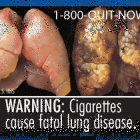
Utah State Supreme Court Changes Definition of Juvenile Incarceration
|
This week, the Utah Supreme Court ruled that children placed in foster, or so-called proctor, homes are no longer considered incarcerated juveniles. The ruling stems from a lawsuit filed by Donna Whitney, who alleges that the 2007 death of her son, Dillon, was a result of poor proctor home supervision. Proctor homes are foster homes for youth in the custody of the state’s Division of Juvenile Justice Services. In the court’s opinion, Justice Jill Parish wrote, “We conclude that a juvenile who is placed in an unsecured community-based proctor home in not incarcerated in a place of legal confinement.”
As The Salt Lake Tribune reported, the ruling allows Whitney to proceed with several suits against the Utah Department of Human Services and Division of Juvenile Justice Services, as well as the state of Utah and Quest Youth Services. “Accordingly,” the court opinion continues, “the incarceration exception to the state’s waiver of its sovereign immunity does not apply and the state remains potentially liable for damages related to Dillion Whitney’s death.”
In August 2007, Dillion was placed in a proctor home after appearing in juvenile court several times.








